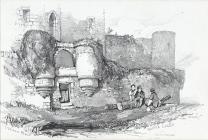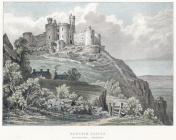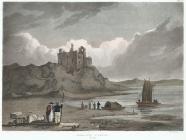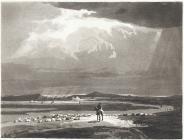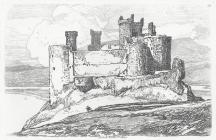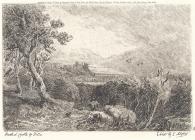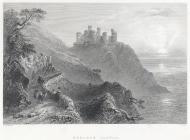Harlech Castle
Harlech Castle perches on top of a high cliff, affording one of the best views across the northern half of Cardigan Bay and large sections of Snowdonia on the landward side. According to Welsh mythology, the ruins of the present castle were built on top of a fortress that once belonged to the giant Bendigeidfran (the blessed Brân), who lived here with his sister Branwen, after whom one of the towers is named. However, archaeologists have found no evidence for a Welsh fortified structure predating Edward I’s castle.
Edward I commissioned the construction in 1283 as part of his great ‘Iron Ring’ of castles along the Welsh coast to subject the indigenous population to his rule. At that time, it was still possible to supply Harlech by boat as the sea reached all the way up to the cliffs. When Owain Glyndŵr laid the castle under siege in 1404, the garrison stationed there was grossly understaffed and surrendered themselves. As a result, Glyndŵr established his home seat and military headquarters here for the next four years. The most famous siege, however, occurred during the Wars of the Roses from 1461 to 1468. This siege, the longest in British history, is said to have inspired the song ‘Men of Harlech’.
Ever since the Romantic period, many tourists have been drawn to this remote part of Wales thanks to the combination of Harlech Castle’s picturesque situation and its exciting history. The German journalist Francis Brömel further delighted in the local tales of ghosts and will-o’-the-wisps hovering all over the marshland that had appeared by the natural build-up of silt over the centuries.

